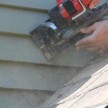Replacing Old Building Products
The Environmental Benefits of Replacing Old Building Materials
At this point, there really is not any need to further repeat the amazing environmental benefits of outfitting older homes with , products and materials. The immediate impact of these necessary changes will save water, energy, gas and oil usage.
Simply by making these large and oftentimes small changes, there is an incredible reduction of environmental effect. Replacing ancient faucets, shower heads and toilets saves water. Improving heating and wiring systems and replacing insulation saves energy.
These improvements have a larger impact on the environment than just cost-savings per household: they reinforce the need to be Eco-conscious in every area of our lives.The Health Benefits By removing and updating old products, especially in aging homes, is an incredible boon to homeowners’ health.
Though it may seem counter intuitive, but removing the original building materials and replacing them with more energy-efficient and Eco-friendly products does improve quality of life.
Replacing Old Building Products
The simple question is: why?
For homes built before the late 1970s, most contained an unreasonable and unhealthy amount of toxins, including lead paint, asbestos and harmful plastics.
By replacing these products – ceiling and floor tiles, insulation, paint, wallpaper, counter tops and wiring, among others – homeowners are lowering their environmental impact while protecting their health.
All of these products and materials, used in the booming era post-World War II, were easy, reliable and inexpensive. Sadly, the health risks were not known until much later.
Plastics containing formaldehyde typically used in plumbing and tiles, if improperly removed or even unintentionally broken, may lead to upper respiratory issues and some cancers. Further, exposure to asbestos products commonly found in insulation and wiring systems, were also disrupted, allowing the particles to become airborne, may lead to mesothelioma.
Further, by aging, these homes are a cesspool of toxins, even without the well-meaning intentions to become more environmentally friendly.
People who own homes that were built prior to the 1970s and are ready to upgrade to more energy-efficient and Eco-friendly products, must first consult with a professional before any improvements are made. If not, then these homeowners’ earth-friendly intentions are wasted and jeopardizing the health of their family and friends.
Rest assured: though exposure to these common toxins is common, the medical advancements for potential diseases are advancing. To the breakthroughs in mesothelioma treatments to the current longevity of lung cancer patients, there is hope for those intrepid homeowners who may have been accidentally exposed.
The Cost Benefits
The return-on-investment (ROI), a common business phrase, applies to those homeowners seeking to not only reduce their overall environmental impact but also their long-term health.
It is a misconception that upgrading to Eco-friendly products and appliances is expensive. Between the available grants and tax-incentives provided by both governmental agencies and non-profits, there is no reason why homeowners need to shy away from these very necessary upgrades.
This misconception is so pervasive that even without grants and monetary support, homeowners do not think that purchasing Eco-friendly products are inexpensive. In fact, these products are cheaper.
Not only for the initial purchase, but for the long-term cost benefits. Homeowners will see an immediate savings on their energy and water bills, along with a comprehensive reduction of their environmental impact.
Such Eco-friendly practices at first may seem more to save homeowners unwanted expenses, but truly, by replacing and updating, it reinforces the act of being green. From doing these critical updates, more homeowners are prone to compost, reuse, recycle and even up cycle. This chain of behavior is really what matters in the long run.










